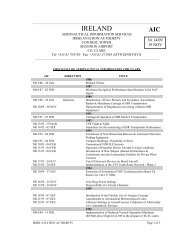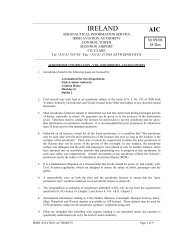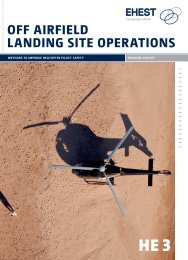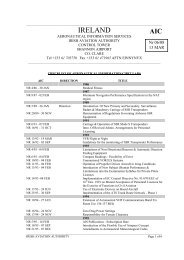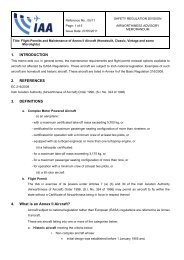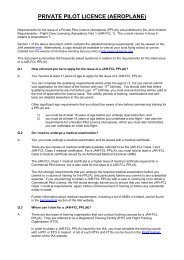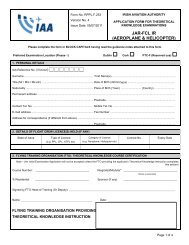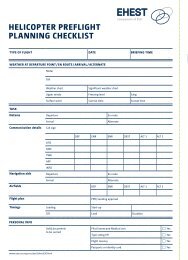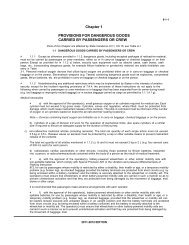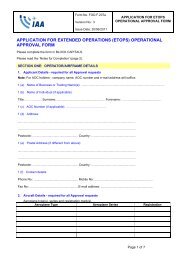Provisions for dangerous goods carried by passengers and crew
Provisions for dangerous goods carried by passengers and crew
Provisions for dangerous goods carried by passengers and crew
You also want an ePaper? Increase the reach of your titles
YUMPU automatically turns print PDFs into web optimized ePapers that Google loves.
8-1-4 Part 8Items or articles7) Mobility aids (e.g. wheelchairs)powered <strong>by</strong> lithium ion batteries,<strong>for</strong> use <strong>by</strong> <strong>passengers</strong> whosemobility is restricted <strong>by</strong> either adisability, their health or age, ora temporary mobility problem(e.g. broken leg)CheckedbaggageYesLocationCarry-onbaggage(see7 d))On thepersonApproval of theoperator(s)is requiredThe pilot-incomm<strong>and</strong>mustbe in<strong>for</strong>medRestrictionsNo Yes Yes a) the batteries must be of a type which meets therequirements of each test in the UN Manual ofTests <strong>and</strong> Criteria, Part III, subsection 38.3;b) the operator must verify that:i) the battery is securely attached to themobility aid;ii)iii)the battery terminals are protected fromshort circuits (e.g. <strong>by</strong> being enclosed withina battery container); <strong>and</strong>electrical circuits have been isolated;c) mobility aids must be <strong>carried</strong> in a manner suchthat they are protected from being damaged <strong>by</strong>the movement of baggage, mail, stores or othercargo;d) where the mobility aid is specifically designed toallow its battery(ies) to be removed <strong>by</strong> the user(e.g. collapsible):i) the battery(ies) must be removed <strong>and</strong><strong>carried</strong> in the passenger cabin;ii)iii)the battery terminals must be protectedfrom short circuit (<strong>by</strong> insulating theterminals, e.g. <strong>by</strong> taping over exposedterminals);the battery must be protected from damage(e.g. <strong>by</strong> placing each battery in a protectivepouch);iv) removal of the battery from the mobility aidmust be per<strong>for</strong>med <strong>by</strong> following theinstructions of the manufacturer or deviceowner;v) the battery must not exceed 300 Wh; <strong>and</strong>vi) a maximum of one spare battery notexceeding 300 Wh or two spares notexceeding 160 Wh each may be <strong>carried</strong>;e) the pilot-in-comm<strong>and</strong> must be in<strong>for</strong>med of thelocation of the lithium ion battery(ies);f) it is recommended that <strong>passengers</strong> makeadvance arrangements with each operator.2013-2014 EDITION



